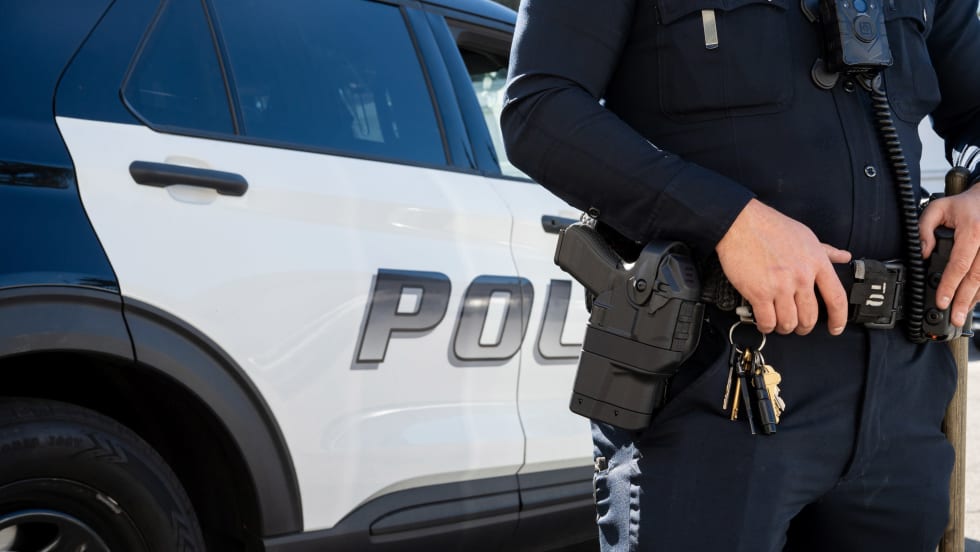In the late-1980s, as the drug established a foothold in Western states, "we were one of the first to realize the effects of the meth problem," says Salt Lake City Chief of Police Chris Burbank.
That meant "more potential exposure to the public, more exposure to kids being around and in the labs," Burbank says. "It wasn't in the outback country that people envision when talking about cooking meth."
Salt Lake City, located in the heart of Mormon country, retains the feel of a small city, even as its metropolitan population surpasses the 1 million mark. Its meth problem, however, rivals that of much bigger communities. Meth use is skyrocketing among women in Utah, which itself has one of the highest rates of meth use in the country.
In 1998, using funds from the U.S. Department of Justice Office of Community Oriented Policing Services (COPS), Salt Lake City PD created the Methamphetamine Initiative. The program brings together more than 30 public and private agencies to address drug rehab and meth-related property crimes, enhanced prosecution, environmental hazards and, of course, child endangerment issues.
The drug "hits all parts of our system," says Marjean Searcy, project coordinator for the Meth Initiative. "Our courts, child protective services, adult protective services, drug treatment, mental health, and jails have been overrun."
"I can't overstate the effect meth has on children," says Lt. Tim Doubt, who oversees the Meth Initiative, as wells as the department's gangs, narcotics, and SWAT units. "One of the major things we've accomplished is developing standardized medical protocols to help those children get the treatment they need."
In Salt Lake City, police no longer routinely release youngsters to relatives or neighbors, who may themselves be addicts. Children's health concerns are addressed up front, while still respecting sound policing practices. For example, children are rapidly decontaminated at the scene for their own (and rescuers') safety-but their drug-contaminated clothing is carefully retained and entered into the chain of evidence.
While paramedics treat immediate medical needs on site, child-welfare caseworkers are called to the scene. A CPS representative accompanies drug-exposed children to a medical facility for more comprehensive care, including head-to-toe pediatric physical exams, and drug and toxicology screenings. To avoid long waits and time-constrained exams in busy hospital emergency rooms, children are taken to smaller clinics for care.
A child-welfare advocate also accompanies youngsters to the Christmas Box House, a child-friendly, one-stop assessment center and shelter for abused and neglected kids. Workers ensure that children are enrolled in appropriate social services, and schedule follow-up visits.In designing the multi-agency program, Salt Lake City police drew on lessons learned during its sponsorship of the 2002 Winter Olympics.
"The Olympics helped Salt Lake City a great deal," says Burbank. "It forced people to work together."
The department also enlists the help of everyday citizens in reporting suspected drug houses and narcotics-related activity. In 2005, police there received more than 1,000 tips on their drug hotline, and strove to resolve issues within two weeks-with increased bike patrols, "knock and talks" at nuisance properties, and resources for landlords or motel management needing to rehabilitate contaminated rental properties.
Community training opportunities will also be part of Utah's Third Annual Drug Endangered Children Conference, which will be held Aug. 17-18 in Salt Lake City. The conference itself will offer a wide variety of continuing-education-credit courses, including narcotics-related investigative techniques, medical and research outcomes for drug-endangered children, and investigating and prosecuting child endangerment cases.
This year, organizers are also reaching out to parents, teachers, and religious leaders with training sessions on current drug trends, narcotics-related cognitive disorders, and ministering to families with substance-abuse issues.
"We really try to include the community with everything we do," says Burbank. "We can't solve the problem without them."
Bryn Bailer, a former newspaper reporter, is a contributing editor for Police. By night, she is a member of the Tucson Police Department Communications Division.










